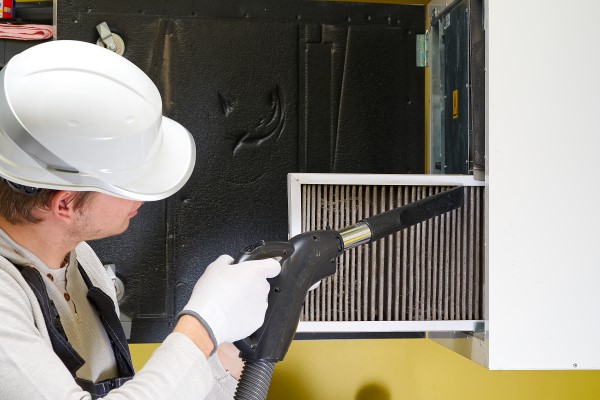Preparing Your Furnace for Fall: Key Maintenance Tips Before the Cold Sets In
Call Us Anytime!
Is Your Furnace Ready for Fall Weather?
As the crisp fall air begins to roll in and the days grow shorter, it’s time to start thinking about keeping your home warm and comfortable for the colder months ahead. One of the most critical steps in preparing for winter is ensuring your furnace is in top shape before the temperatures drop significantly. Regular furnace maintenance not only ensures that your system operates efficiently but also prevents unexpected breakdowns and costly repairs when you need it most.
Taking the time to prepare your furnace in the fall can make a world of difference in the comfort of your home and the cost of your energy bills. This comprehensive guide will walk you through the key maintenance tasks every homeowner should perform to get their furnace ready for the season. From simple DIY steps like checking filters to scheduling professional inspections, we’ll cover everything you need to know.



Optimize Your Air Conditioner Settings
Replace or Clean Furnace Filters
One of the simplest yet most important steps in furnace maintenance is replacing or cleaning the air filter. A clogged or dirty filter can restrict airflow, forcing your furnace to work harder than necessary. This not only increases your energy bills but also reduces the lifespan of your furnace and decreases air quality in your home.
Most HVAC experts recommend changing or cleaning your furnace filter every 1 to 3 months, depending on the type of filter and your household conditions. If you have pets, live in a dusty environment, or suffer from allergies, you may need to replace the filter more frequently. Check your furnace manual for guidance on the type of filter you should use.
Test the Thermostat for Proper Operation
The thermostat is the brain of your HVAC system, and it needs to be functioning correctly to ensure your furnace operates efficiently. Before the cold sets in, test your thermostat to make sure it’s properly regulating the temperature. Set it to a few degrees higher than the current room temperature and listen for the furnace to kick on. If the furnace doesn’t turn on or takes too long, your thermostat may need recalibration or replacement.
For older, non-programmable thermostats, now may be the perfect time to upgrade to a programmable or smart thermostat. These devices allow you to schedule heating cycles around your routine, preventing unnecessary heating when no one is home and optimizing energy usage.
Clean and Clear Around the Furnace
Over time, dust and debris can accumulate around the furnace, potentially creating a fire hazard or impeding the system’s efficiency. Make sure the area around your furnace is clean and free of clutter. This is particularly important if your furnace is in a basement or utility room where you may store other items.
In addition to cleaning the surrounding area, it’s a good idea to clean the furnace itself. Wipe down the exterior to remove dust and dirt, and if you’re comfortable, gently vacuum around the burner and blower compartment. However, leave deeper cleaning inside the system to professionals during an annual inspection.
Inspect Vents and Ductwork
Proper airflow is essential for an efficient furnace, and that includes ensuring your air vents and ductwork are clean and unobstructed. Dust, debris, and even mold can build up in your ducts over time, leading to poor air quality and reduced furnace efficiency.
Walk through your home and make sure all supply and return vents are open and unobstructed by furniture, rugs, or curtains. Closed or blocked vents can cause your furnace to overwork and may even lead to a system shutdown. If you notice excessive dust or musty smells coming from your vents, it might be time to schedule a professional duct cleaning.
In addition to cleaning the ducts, inspect them for any visible leaks or gaps. Even small gaps in your ductwork can result in significant energy loss and uneven heating in your home. A professional can seal these leaks to ensure optimal airflow and efficiency.
Check the Blower Motor and Fan
The blower motor is responsible for pushing warm air through your home’s ductwork, making it a critical component of your heating system. Over time, dust and dirt can accumulate on the blower motor and fan, reducing their efficiency and potentially leading to mechanical failures.
To ensure your blower motor is working properly, you’ll need to check the fan blades and clean off any dust or debris. This will help the system run more smoothly and prevent overheating. Additionally, listen for any unusual noises when the furnace is running, as this could be an early sign that the blower motor or fan needs repair or replacement.
If you’re uncomfortable working with these components, it’s best to leave this step to a professional during your annual furnace inspection.
Inspect and Test the Igniter or Pilot Light
Depending on the type of furnace you have, you’ll either have an electronic igniter or a pilot light to start the heating process. Both of these components are crucial for your furnace to function correctly, so it’s important to inspect them before the cold weather arrives.
For furnaces with a pilot light, check to see if the flame is steady and blue. If the flame is yellow or flickering, this could indicate a problem with the gas supply or a buildup of dirt in the pilot light assembly. In either case, it’s best to call a professional to inspect and clean the component.
If your furnace uses an electronic igniter, test it by turning the furnace on and off a few times. If the igniter doesn’t respond quickly or shows signs of wear, it may need to be replaced. Ignition problems can prevent your furnace from starting altogether, leaving you without heat when you need it most.
Lubricate Moving Parts
Like any mechanical system, your furnace has moving parts that require regular lubrication to function smoothly. Without proper lubrication, components like the blower motor and fan can wear out more quickly due to increased friction.
Check your furnace’s manual to see if lubrication is required for your specific model, and use the recommended type of lubricant. If this task seems daunting, your HVAC technician will typically take care of it during an annual maintenance visit.
Examine the Furnace Belt
The furnace belt connects the blower motor to the fan, allowing warm air to circulate throughout your home. Over time, this belt can become worn, frayed, or cracked, leading to reduced performance or even system failure.
Visually inspect the belt for any signs of wear and tear, and check its tension. If the belt is loose, it may need to be tightened or replaced. Replacing a worn furnace belt is a relatively inexpensive repair, but if left unaddressed, it could cause more significant damage to the furnace system.
Ensure Carbon Monoxide Detectors Are Functioning
Furnaces that run on natural gas or oil produce carbon monoxide (CO) as a byproduct of combustion. While properly functioning furnaces are designed to vent this gas safely, malfunctions can lead to dangerous CO leaks. To protect your family, make sure your home is equipped with carbon monoxide detectors, and test them regularly to ensure they’re working.
It’s a good idea to change the batteries in your carbon monoxide detectors at the start of each heating season, or at least once a year. If your detectors are more than five years old, consider replacing them altogether to ensure your home’s safety.
Schedule a Professional Furnace Inspection
While many furnace maintenance tasks can be handled by homeowners, it’s essential to schedule a professional furnace inspection every year, ideally in the fall before the heating season begins. A certified HVAC technician will perform a thorough check of your entire system, including:
- Inspecting the heat exchanger for cracks or damage
- Testing the gas pressure and airflow
- Cleaning and inspecting the burner
- Checking electrical connections and safety controls
- Testing system efficiency
A professional inspection ensures your furnace is running safely and efficiently and can catch potential problems before they turn into expensive repairs. Regular maintenance can also extend the lifespan of your furnace and improve its overall performance.
Check for Energy Efficiency Upgrades
Finally, consider assessing whether your current furnace is still meeting your home’s energy efficiency needs. Older furnaces, especially those over 15 years old, may be operating at a lower efficiency, resulting in higher energy bills and increased wear and tear. If your furnace is nearing the end of its lifespan, fall is the perfect time to explore energy-efficient upgrades.
Many newer furnace models come equipped with advanced features like variable-speed blowers, two-stage heating, and smart thermostats, all of which can reduce energy consumption while providing consistent comfort. Upgrading to an ENERGY STAR® certified furnace can save you up to 15% on your heating bills, making it a worthwhile investment in the long run.
Let Anytime Keep Your Furnace Ready
Preparing your furnace for fall is essential for ensuring a comfortable, energy-efficient home during the colder months. By following these key maintenance tips—replacing filters, cleaning around the furnace, testing components, and scheduling a professional inspection—you can avoid unexpected breakdowns and keep your system running smoothly.
Regular furnace maintenance not only saves you money on energy bills but also extends the life of your system, giving you peace of mind as winter approaches. Take the time this fall to give your furnace the attention it needs, and enjoy a cozy, worry-free home all season long.


